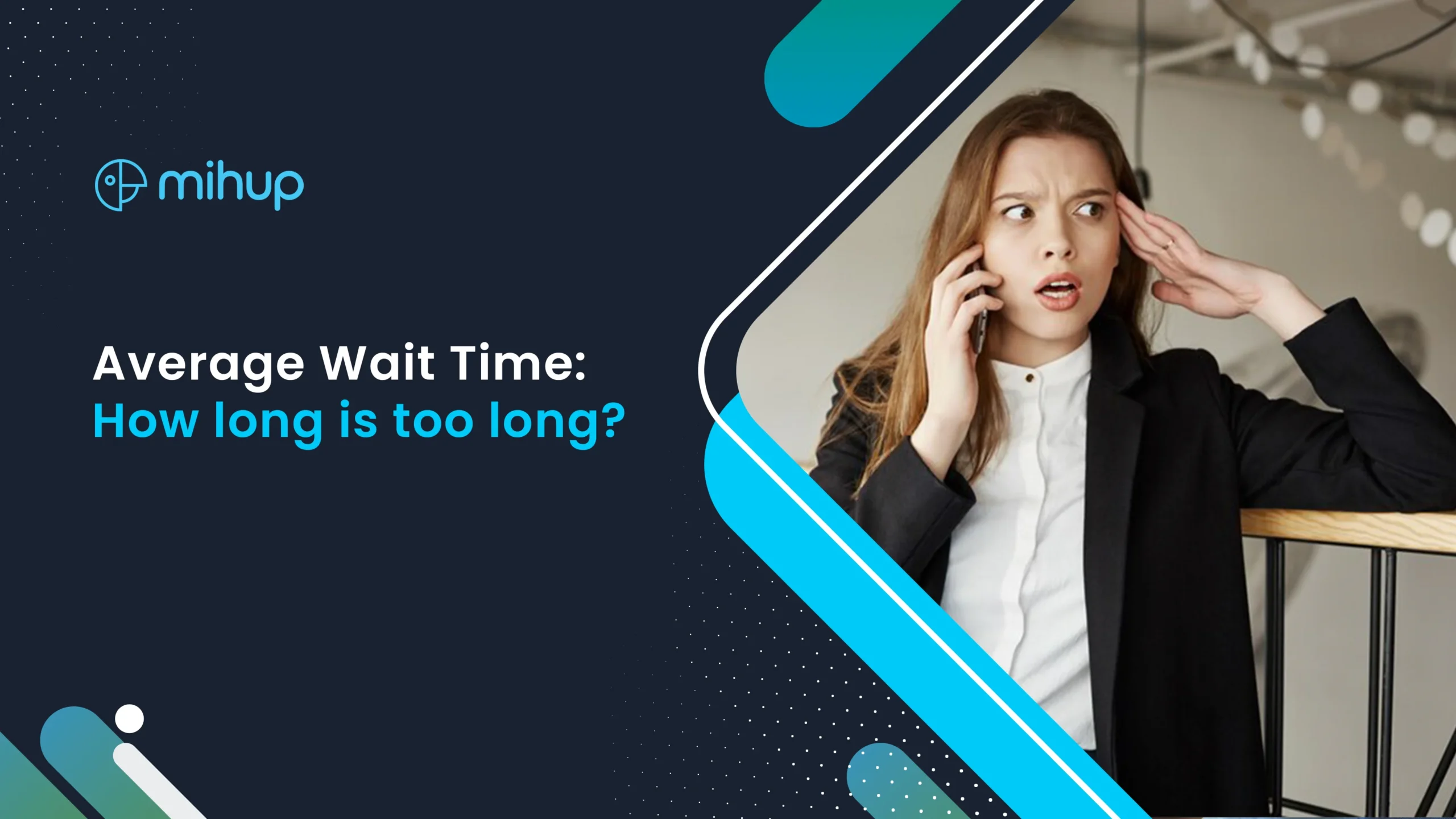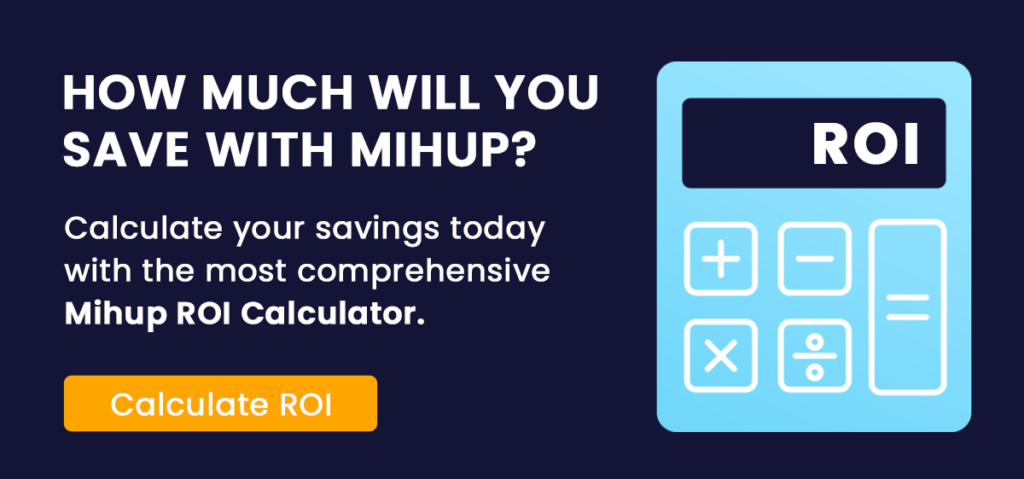“Please stay on the line. Your call is important to us.”
When customers hear this message, do they truly believe it? The longer they are made to wait, the less important they feel. According to a report, in 2021, customers had to wait an average of 46 seconds for call centers to answer their calls? Around 28% of these callers disconnected before being able to speak to a representative from the business.
We have all experienced it before—waiting on hold for what feels like an eternity. It can be one of the most draining aspects of a phone conversation, and as a customer-centric business, you want to minimize this wait time as much as possible.
Extended wait times can be detrimental to any business, resulting in lost customers and clients. Therefore, it is crucial to monitor your wait times closely and continually seek ways to enhance them as a business.
Understanding the duration it takes to answer customer calls can help address this concern, which is why Average Wait Time has become a crucial performance metric for contact centers. Let’s talk about Average Wait Time, and what are some effective strategies to minimize it and ensure prompt and efficient handling of customer calls.
What is the Average Wait Time (AWT) call center?
Average Wait Time (AWT) or Average Speed of Answer (ASA) refers to the duration callers spend in a queue before their inbound call is answered. AWT can be assessed globally across the contact center, by ring group, agent, or phone number. The conventional industry standard for service level in call centers is 80/20, meaning that businesses aim to answer 80% of calls within 20 seconds, on average.
Average Wait Time provides a straightforward measure of the average time an inbound call waits in a queue or for a callback. It does not encompass the time spent interacting with an IVR or auto-attendant. It is important not to confuse this metric with average handle time (AHT), which denotes the time taken by an agent to complete a call. AWT can be measured based on the queue, skillset, agent group, or phone number.
According to a study conducted in 2021, the Average Wait Time across various industries within contact centers was 46 seconds. This indicates that, on average, callers waited for 46 seconds in a call queue before being connected to a representative of the company. The specific duration varies across industries.
Notably, eCommerce companies, including groceries, direct-to-consumer (D2C) brands, and online pharmaceutical companies, maintained high service levels with an Average Wait Time of 27 seconds. In contrast, certain broking companies experienced significantly longer average wait times, reaching as high as 125 seconds.
What is an acceptable waiting time for customer service?
The widely accepted industry standard for Average Wait Time (AWT) is to answer 80% of calls within a 20-second timeframe.
In 2014, American Express conducted a study revealing that callers were willing to wait for a maximum of 13 minutes. However, a subsequent study by Arise just 3 years later found that approximately two-thirds of consumers would accept hold times of fewer than two minutes, while 13% indicated that no hold time at all was acceptable. Additionally, around 34% or one-third of callers would hang up and not call back if their calls were not answered promptly. This abandonment rate is an important metric in call centers.
Multiple studies indicate that customer expectations for service are increasing. For instance, in 2018, 98% of callers contacting customer service departments or contact centers were willing to wait for 75 seconds or longer for their calls to be connected. However, by 2021, even with significantly reduced wait times, 54% of these callers would disconnect.
In today’s era, customers anticipate fast and near-instantaneous call experiences. This shift can be attributed to the rise of eCommerce, where customers have become accustomed to real-time service with a simple click. Call centers and brands providing customer care services must adapt to this demand in order to thrive.
The data clearly illustrates a rapid upward trend in customer expectations for exceedingly fast, if not immediate, service. In the age of eCommerce and social media, where consumers expect real-time assistance at their fingertips, it is crucial for call centers to keep pace with these demands.
Why reduce AWT/call center queue waiting times?
The realm of eCommerce has experienced rapid growth in the past decade, significantly influencing customer expectations for their overall experience. Customers have adapted to a world where instant and comprehensive service is just a click away. They now anticipate the same level of service from all brands and companies, and those failing to adapt to this shift are at risk of falling behind.
There are numerous benefits to reducing wait times, as previously mentioned. In addition to ensuring customer and client satisfaction, it also fosters repeat business. When customers and clients know they won’t endure long durations to speak with someone, they are much more inclined to return and continue utilizing your business or service.
Maintaining a lengthy average wait time in your call center can be detrimental to any business. If you aim to enhance client and customer satisfaction, one effective starting point is reducing wait times. Now, let’s explore some approaches to accomplish this goal.
How to Reduce Average Wait Times with Speech Analytics
Utilizing speech analytics in contact centers can play a crucial role in reducing Average Wait Time. Speech analytics refers to the technology and techniques used to analyze and extract valuable insights from customer interactions, specifically focusing on spoken conversations. By applying speech analytics tools and methodologies, contact centers can gain a deeper understanding of customer behavior, identify inefficiencies, and implement targeted improvements to minimize wait times.
Here are some steps to implement this approach effectively:
- Analyze Call Patterns – Utilize speech analytics tools to analyze call patterns and identify common reasons for long wait times. Look for trends such as specific customer inquiries, recurring issues, or bottlenecks in call-handling processes.
- Identify Call Abandonment Causes – Speech analytics can help identify factors that contribute to call abandonment. By understanding why customers hang up before their calls are answered, you can address those pain points and make improvements to reduce abandonment rates.
- Optimize IVR Systems – Interactive Voice Response (IVR) systems can be optimized using speech analytics to ensure callers are efficiently directed to the right departments or agents. Analyze customer interactions with the IVR system to identify areas where improvements can be made to reduce transfer times and enhance self-service options.
- Monitor Agent Performance – Speech analytics tools can help monitor and assess agent performance in handling calls. Identify areas where agents may need additional training or support to improve their efficiency and reduce call handling times.
- Implement Real-Time Analytics – Utilize real-time speech analytics to monitor ongoing calls and identify potential issues that may lead to increased wait times. This allows for immediate intervention to address customer needs promptly and minimize wait times.
- Automate Routine Processes – Identify routine processes or inquiries that can be automated using speech analytics technology. By automating repetitive tasks, customers can get faster resolutions without having to wait for agent assistance.
- Predictive Analytics – Utilize predictive analytics capabilities to forecast call volumes and peak periods accurately. This information can help you proactively allocate resources and staff accordingly to minimize wait times during high-demand periods.
- Continuous Improvement – Regularly analyze and review speech analytics data to identify opportunities for continuous improvement. Monitor the impact of implemented strategies and make adjustments as needed to further reduce Average Wait Time.
By leveraging the power of speech analytics, contact centers can gain valuable insights into customer interactions, optimize processes, and proactively address areas that contribute to longer Average Wait Time. This, in turn, enhances customer satisfaction and improves overall efficiency in the contact center.





